Wild birds are a common sight in many parts of the world. Their life and instincts always fascinate people who are wildlife explorers.
Thus, you probably have wondered sometimes what wild birds eat. Well, they have a diverse diet. It includes seeds, fruits, vegetables, insects, dead animals, and sometimes garbage.
This article examines wild bird diets and the different types of food they consume. If you’re wondering what wild birds eat, read on!
What do Wild Birds Eat? Different Species and Their Diet
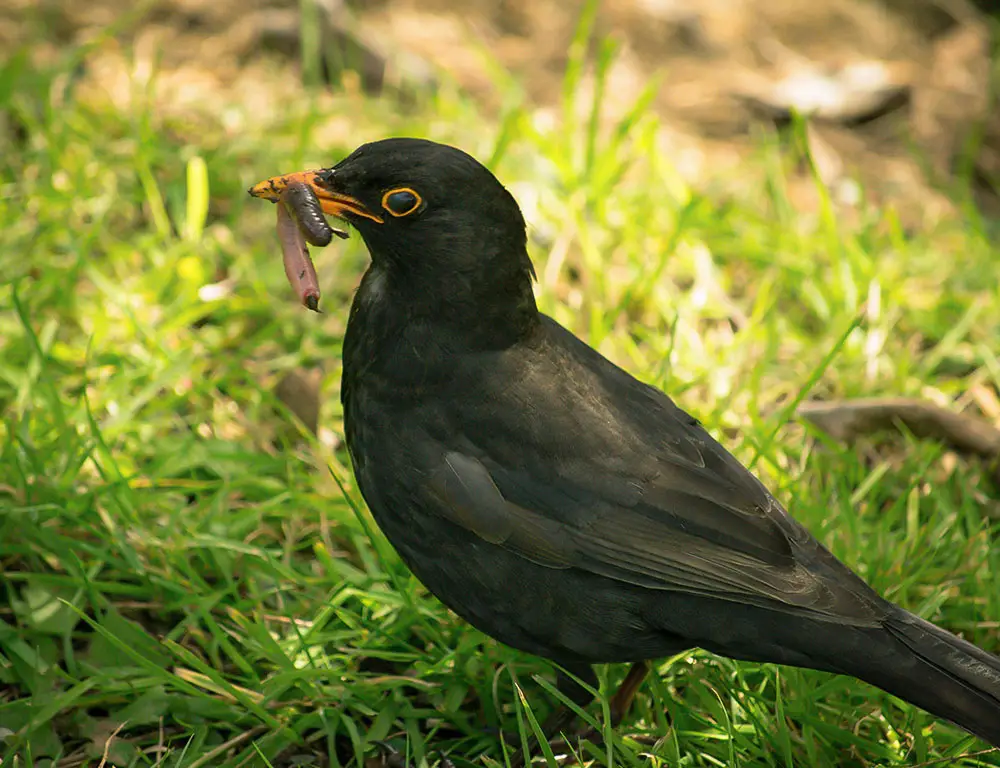
Like life in the wild or on a mountain, wild birds’ food habits are diverse, too. The table below quickly examines some of the wild birds and their diets.
| Bird Species | Diet |
| Sparrow | Seeds, fruits, insects, spiders |
| Finch | Seeds, fruits, insects, spiders |
| Woodpecker | Insects, grubs, fruits, nuts |
| Humming Bird | Nectar, small insects, and spiders |
| Pigeon | Seeds, fruits, plants, insects |
| Blue Jay | Seeds, fruits, nuts, insects, spiders, small reptiles |
| Osprey | Fish, amphibians, small animals |
| Bald Eagle | Fish, birds, mammals, reptiles, etc. |
| Hawks | Small animals, birds, insects |
Please note that this table is not a comprehensive list of all wild birds and their diets. Different bird species’ diets and dietary requirements vary depending on their location, season, and food availability.
Wild birds, though, are numerous. If we had everything categorized, the conversation would be easier to follow. Consider some common foods and the birds that eat them.
Seed and Fruit Eaters
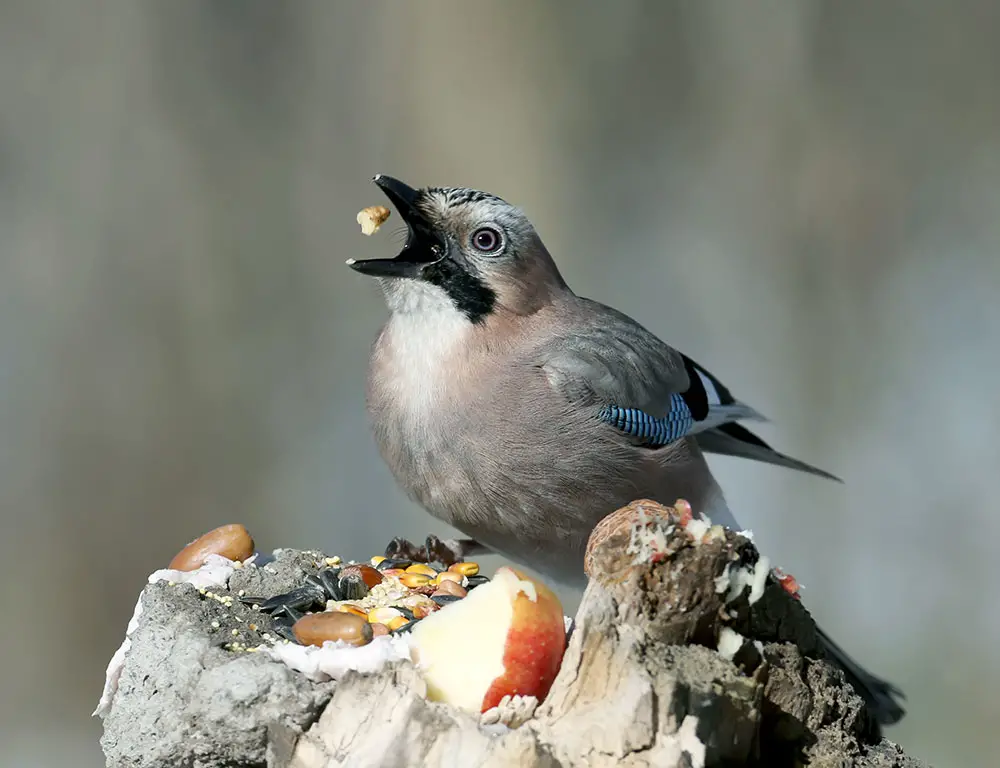
In this category, only birds that like to consume fruits or seeds are added. The list is pretty long, anyway.
Sparrows, finches, bluejays, and pigeons are birds that primarily eat seeds and fruits. These birds forage for seeds on the ground, in bushes and trees, or from bird feeders.
They also eat a variety of fruits, such as berries, cherries, and other small fruits, which are available in their natural habitat. These birds often have beaks and claws that are friendly for cracking seeds and fruits.
They have a varied diet that includes sunflower seeds, millet, and safflower seeds, which they can find at bird feeders. They also feed on insects and spiders to supplement their diet.
Insect Eaters
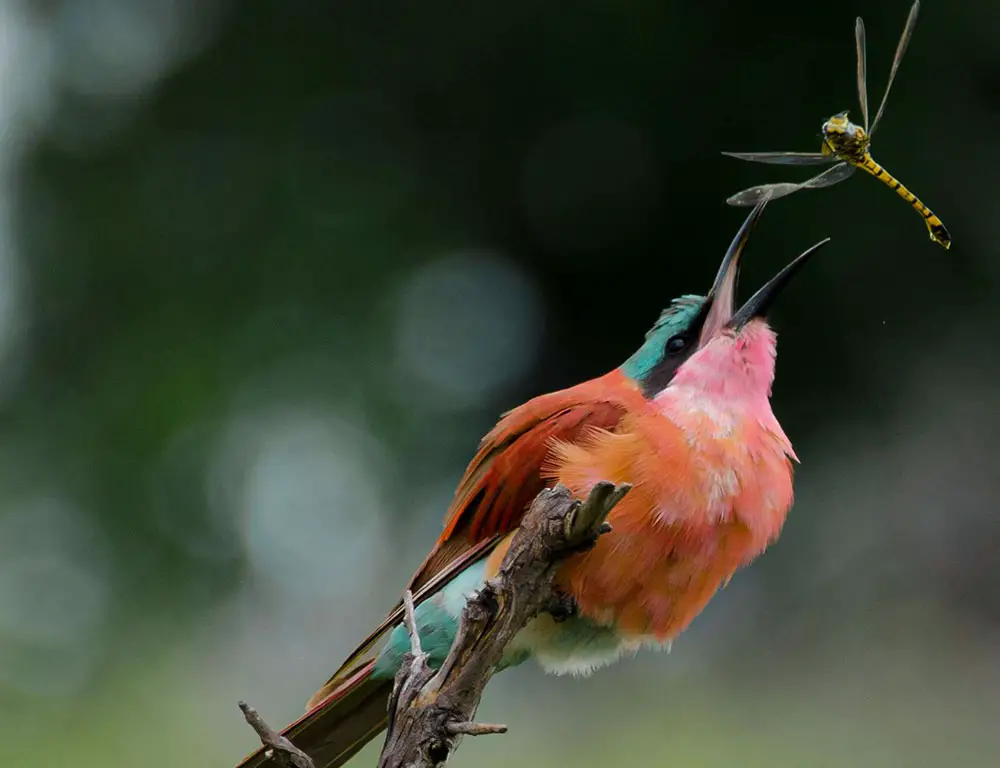
Some species, such as Woodpeckers, Baltimore orioles, and many species of hawks, are examples of birds that eat insects.
These birds consume various insects as food sources, such as beetles, caterpillars, ants, flies, ants, moths, aphids, grasshoppers, and termites. They have specialized beaks and claws that help them catch and consume insects.
Insect-eating birds have developed specific foraging behaviors that allow them to locate and catch insects.
For example, woodpeckers use their solid and chiseled beaks to peck at the bark of trees in search of insects, grubs, and other wood-boring insects. Conversely, Hawks have sharp nails that help them catch and kill insects and small mammals.
Nectar Eaters
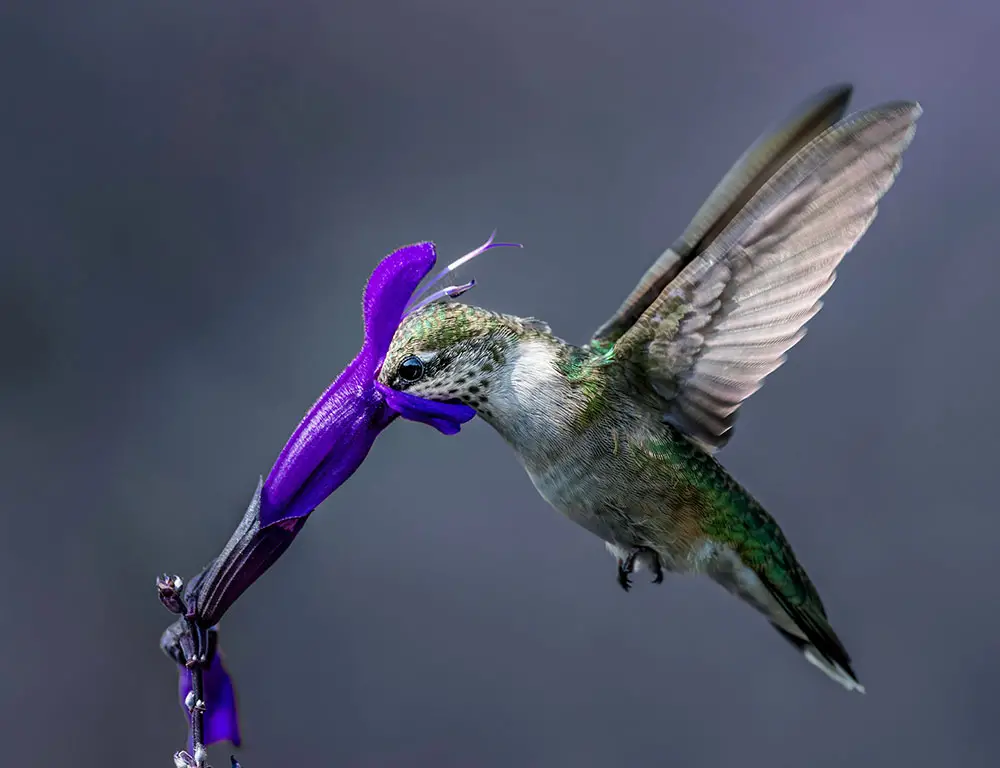
Hummingbirds are an excellent example of birds that primarily eat nectar. They feed on nectar from flowers and occasionally supplement their diet with small insects and spiders for protein.
Because of their long beaks and tongues, these birds can reach deep inside flowers to get nectar. They visit different kinds of flowers throughout the day to consume nectar. They also feed on small insects and spiders for protein and other essential nutrients.
Fish Eaters

Ospreys and bald eagles are birds that are known to eat fish. These birds prey on fish in rivers and oceans, searching for dead fish along the coast. Ospreys have long, narrow wings and sharp talons that allow them to dive into the water and catch fish.
Bald eagles also have sharp talons and powerful beaks that allow them to catch and kill fish and other small mammals and reptiles.
Except for Bald Eagles and Ospreys, other bird species such as pelicans, great Cormorants, kingfishers, and some birds are also known as fish eaters.
Carnivores
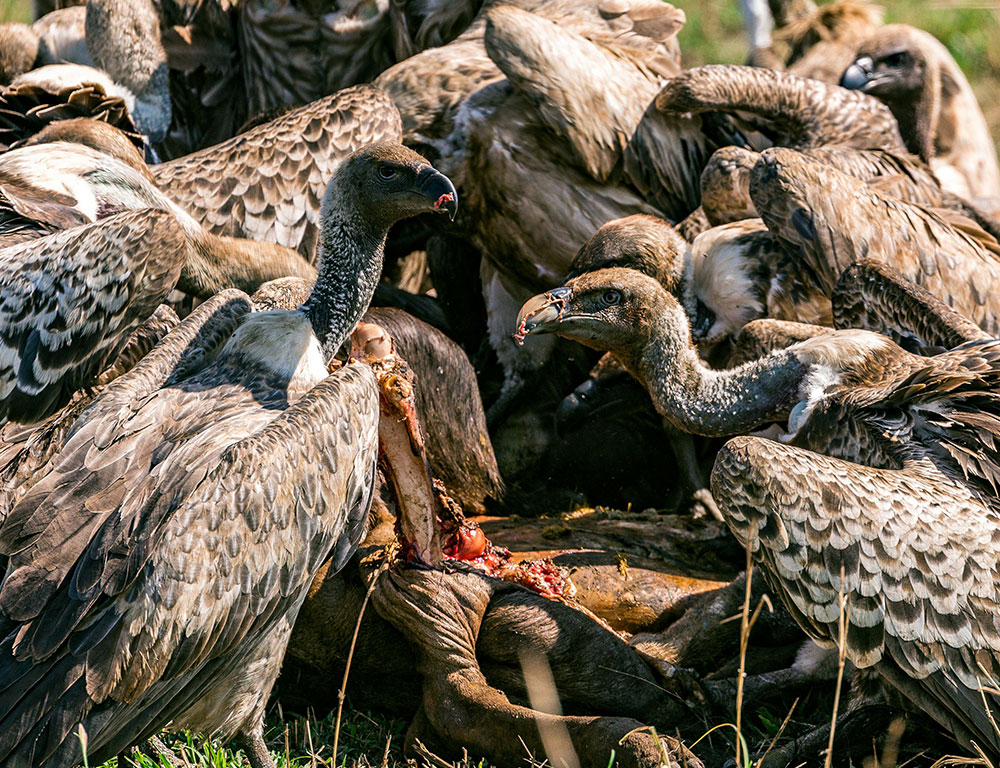
Vultures and Ravens are examples of carnivorous birds. They mainly feed on small mammals, reptiles, birds, and insects. They also scavenge for carrions.
These birds have sharp talons and beaks to catch and kill their prey. Vultures are known to hunt small mammals like mice, voles, and rabbits.
On the other hand, Ravens are known to hunt for fish and other small aquatic animals. They also scavenge for carriers like dead fish and animals to supplement their diet.
FAQs
If you are still here, I can assume you are eager to learn more. Please have a look at this section.
Wild birds should not be fed pet food, as it is not formulated for their nutritional needs. Pet food is intended for dogs, cats, and other domestic animals, and it may not provide the necessary nutrients for wild birds.
Wild birds may have different preferred mealtimes depending on the species and their eating habits. While some birds like to eat in the morning, others might be more active in the late afternoon or evening.
No, despite frequent claims to the contrary, avocados may not be beneficial to wild birds. Avocados have a substance called persin that, in large doses, can poison birds.
Conclusion
Wild birds are fascinating creatures in all shapes and sizes, each with unique diet preferences. Understanding the different types of foods that wild birds eat can help us better appreciate these beautiful creatures.
So, what wild birds eat is a question that requires to be answered and described.
Wild birds have a wide range of dietary needs, from seed and fruit eaters to insect and nectar eaters. As we learn more about wild birds and their nutritional needs, we can take steps to help protect and conserve these essential members of our ecosystem.